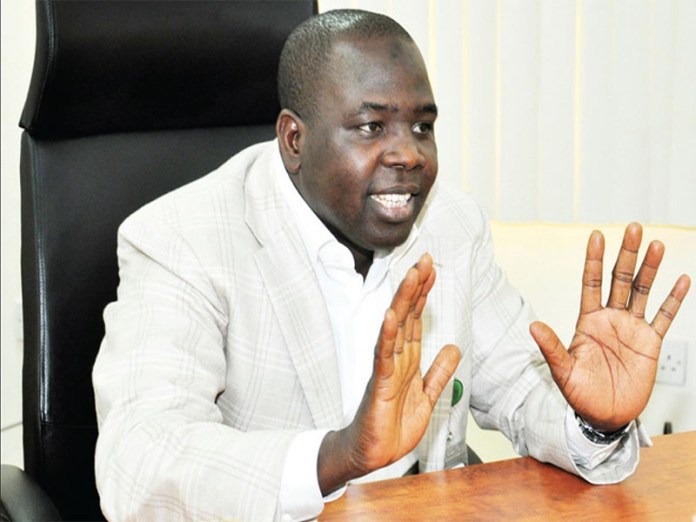Markets
Jubrin: Sun Trust Bank is Part of the Tectonic Movement in Banking
Published
8 years agoon

Managing Director/CEO of Sun Trust Bank, Muhammad Jibrin, tells why the new entrant’s game plan is anchored on tectonic shift in banking with emphasis on the retail customer, the small and medium business sector.
Can you give an insight into your optimism attracting 30 million or more new customers to your data base?
I said earlier we have 30 million bank accounts only, okay? And we have looked at it and seen that in a population of 180 million, 150 million people are excluded from the banking population. Let’s agree that 50 million of that population is our target; the idea still is to add value to the existing number of the bankable population. Here we are trying to attract or accommodate about 50 million people excluded from having banking services; that is one.
Secondly, statistics have shown that of all the transactions executed today, not only in Nigeria but worldwide, more than 90 percent of such transactions are electronic; so it is just this very insignificant ten percent that is being projected to be accommodated in the tectonic banking plan; That was why we were very clear about this policy from day one, which is that any institution that thinks the branch banking is still at the core of its brand network is not ready for the customer of tomorrow. The customer of today is executing 90 percent of his transaction electronically, and we are not even talking of the customer of tomorrow.
Does that suggest physical branches would no longer be there?
No, I don’t think so. We will still have physical presence; people need to interact; nobody wants to talk to machines from time to time but when we tried to test our systems, people did come with cheques to cash them and we asked them why they need the cash and they replied they needed to make a withdrawal because someone has given them a cheque and they wanted to pay it into their accounts. I asked them to give me their account details and after giving me the account details, I transferred the money to their accounts immediately and they received their alerts and then thanked me for saving them from some problems. Seriously, this is exactly what we need now and all it takes is to educate the customer.
Will Sun Trust run minimum across the counter transactions?
There will be zero behind-the-counter transactions. Absolutely; what we are driving is powered by the electronic movement. But even in the U.S. Bank of America, Chase, Citi et al still operate across-the-counter transactions?
Look, there will still be one or two such activities but we don’t want to do that. Apart from the banks you mentioned, there are still financial technology banks that don’t even have any physical presence.
Today, you don’t need to come to SunTrust to open an account, you don’t need to fill a physical form to open an account, all I ask you to do is go to the website, go to the personal banking page of the website and you will be able to fill your account opening form online, submit it online and the next morning you will get your account number, cheque book and data.
So what if I have a million naira to deposit in cash, what do I do?
We will collect it and take it to the Central Bank, we can collect it but you will not see a physical counter.
And if I want to draw cash, I go to the ATM?
You go to the ATM, why do you need to carry one million naira? It’s risky because your demands would not be up to that.
What do I do when I am depositing my cash?
We can take it from you and send it to the Central Bank. There are four major drivers of the economy in the building block today, which will continue to change the future of everything; one is mobile penetration, that has been achieved in Nigeria as there is huge mobile telephone penetration in this country, the next is the broadband penetration as there is huge and ongoing broadband penetration in Nigeria especially with the deployment of various fibre-optic technology n the system across the country and the sub-region. When these things happen, the next big thing is where we are, which is the small and medium enterprise or the mass market, this is what I call the mass market.
How is a technology driven bank’s function different from what we know?
It is a matter of emphasis and reaching out to a larger population because over ninety percent of transactions today are executed electronically. Here at Sun Trust we do not have counter, teller and cashier cubicles. This is because there is no need for them. Any institution that believes that physical branches are at the core of its brand is not prepared for the customer of tomorrow who neither wants to go to the physical branch nor wants to go and carry out a transaction over the counter either in cash or cheque. On the contrary most customers today would rather execute their transactions electronically; at the minimum if they need cash they will go to an ATM.
So banking is no longer where you go to today; it is what you do 24/7 and this is at the heart of our philosophy and if you believe in this then there is no need for you to have physical branches. At the heart of our strategy therefore, we agreed that this bank would be known as a financial technology bank, we are going to drive and deliver banking services using technology, and this is the future of banking. We need to ensure that people have access to ATMs and businesses are working very well and that people can do mobile banking; once we are able to deliver these services there is really no need for a bank to speculate how honest a bank is with the customer.
The truth is that quite a large number of the populace has been excluded from having access to financial services, so our target market would continue to be the small and medium enterprises and the retail ones but more importantly we shall focus on them, on those that are in the South and those that are excluded from financial services and I will tell you why I said so. If you look at it, after the bidding exercise that was conducted by the Central Bank in conjunction with the commercial banks, you would agree with me that the total number of bank accounts in the system that we have seen is not more than thirty million; Nigeria’s population is about 180 million; it is growing at an annual growth rate of about three percent and when that is compounded over the next ten years Nigeria would not be less than 220 to 230 million people.
Now more than 70 percent of that population largely made up of young people, is excluded from financial services. When you analyse the demography, if you categorize the population, you will notice that about 70 percent of this population consists of the youth and therefore looking at it today our youth population would be more than double by 2020 and when this happens, we shall be looking at a population that is technologically savvy and very agile when it comes to the issue of technology.
Sadly they are the ones excluded from financial services, what you and I take for granted, services that easily give us access to all types of transactions, payment of our bills, saving for a rainy day and even borrowing on very reasonable terms from banks. This group does not have that access and the Central Bank of Nigeria is trying to ensure that there is financial inclusion; so given all these things together and looking at where the economy is going, where the country is going, where the growth is, we believe that we should target the youths as tomorrow’s beneficiaries of the larger network of electronic banking technology.
Will this innovation mean a shift of emphasis on collaterals?
Our target market is the retail customer, who is a very difficult customer but in these very small and medium enterprises you can clearly see an engine room for growth and development and you can put them in clusters, in cooperatives and in groups and therefore be able to provide credit to this particular group of people and when you do this peer pressure would be on each and every one to ensure that you settle your obligations to ensure that the next person gets access to credit.
Does that mean your security network here is moderately designed?
Absolutely, we don’t have a forest of police men guarding this place because I don’t have anything in physical form that you can come and take but I have a cyber security network and that means you cannot break into my system, that is the issue that we are selling because rather than spend money on physical security, I spend more money on cyber-security as a financial technology bank. Of course, we have adequate security for the premises; there would always be a good measure of security.
Who are your correspondent banks abroad?
We are working with Citibank, Barclays in China, ICBC, Deutsche Bank and the normal banks; of course we are going to focus on trade and work with those banks we need for our trade and other transactions.
Is the CEO and Founder of Investors King Limited. He is a seasoned foreign exchange research analyst and a published author on Yahoo Finance, Business Insider, Nasdaq, Entrepreneur.com, Investorplace, and other prominent platforms. With over two decades of experience in global financial markets, Olukoya is well-recognized in the industry.

You may like
-


Zhongshang Fucheng Moves to Auction Nigerian Properties in UK Following $70M Arbitration Award
-


Nigerians and Indians Lead UK Job Market Growth Amid Post-Brexit Migration Shifts
-


Violent Protests Erupt Across Nigeria, Leaving Six Dead and Many Injured
-


Nigerian President Tinubu Condemns Protest Plans Over Economic Woes
-


Nigeria to Suspend Import Levies on Food Crops to Ease Inflation Pressure
-


Nigeria Leads Africa in Private Equity Deals, Records $2.59 Billion in Q1 2024








